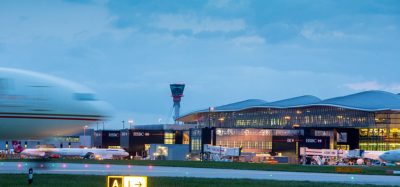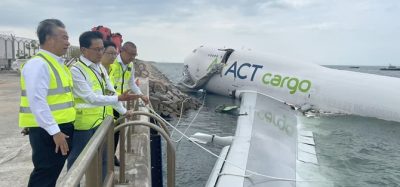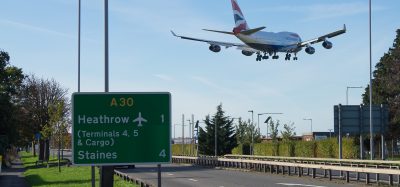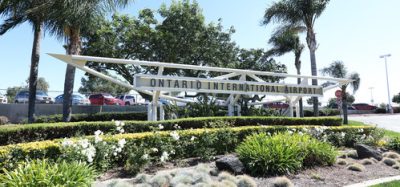ASTM International and friction
Posted: 30 September 2008 | Mr. Frank B. Holt, Chairman of ASTM Committee E17 Vehicle Pavement Systems | No comments yet
ASTM International is one of the largest voluntary standards development organisations in the world, a trusted source for technical standards for materials, products, systems and services. Known for their high technical quality and market relevancy, ASTM International standards have an important role in the information infrastructure that guides design, manufacturing and trade in the global economy.
ASTM International is one of the largest voluntary standards development organisations in the world, a trusted source for technical standards for materials, products, systems and services. Known for their high technical quality and market relevancy, ASTM International standards have an important role in the information infrastructure that guides design, manufacturing and trade in the global economy.
ASTM Committee E17 on Vehicle-Pavement Systems was formed in 1960 to bring together many of the world experts in friction and to develop standards for data collection, equipment design and data analysis. Since 1960, the Committee has expanded its efforts beyond friction to include roughness, pavement management and intelligent vehicle/highway systems. By sponsoring frequent technical symposiums at their semi-annual meetings, which usually take place in June and December, Committee E17 promotes useful discussions and data dissemination, which results to consensus improvements in measuring techniques, equipment hardware/software and data analysis.
The Committee’s scope of work includes ‘The stimulation of research, dissemination of knowledge and development of principles, techniques and standards for Pavement Management Technologies, Vehicle Pavement Interactions, and Intelligent Vehicle/Highway Systems.’
Join us live: Shaping the Next Generation of Hold Baggage and Air Cargo Screening
Join us live for an insightful webinar on 11th December at 14:00 GMT, in collaboration with Smiths Detection, as we explore the strategic balance of operational efficiency, regulatory compliance, and sustainability in high-volume security environments.
This session offers a focused look into future-proofing your security strategy.
Key learning points
- Cost Reduction: Strategies to minimize bag travel time while simultaneously reducing operational costs.
- Regulatory Roadmap: Insights into the next wave of regulatory changes and their impact on future investment decisions.
- Sustainable Systems: Practical approaches to building sustainability into security systems and lowering the total cost of ownership (TCO).
- Scalable Solutions: Real-world examples of scalable systems supporting current airport growth and preparing for tomorrow.
Register now for expert insights, case studies, and actionable strategies on operational efficiency!
The Committee, with a current membership of approximately 170, has 11 technical sub-committees that have jurisdiction of over 40 standards, published in the Annual Book of ASTM Standards, Volume 4.03. Some more notable and energetic members include Gus Whitehurst, Wolf Meyer, Ralph Kummer, Walter Horne, Jim Wambold, J.J. Henry, Tom Yager and Frank Holt.
One of the key areas of concern during the past decade has been the standardisation of friction testing equipment and procedures. Early efforts developed standard tyres for all of the friction equipment currently used at airports around the world. Most manufacturers have adopted these standard tyres for their equipment, thus providing a standard reference for the measurements. Both the Federal Aviation Administration (FAA) and the International Civil Aviation Organization (ICAO) have recognised these efforts and have referenced these standards in their advisory circulars and reference documents.
The list of standards currently on the record includes:
- Standards for test tyres
- Fixed slip friction testers
- Variable slip testers
- Locked wheel testers
- Side force friction testers
- Decelerometers
- Pavement texture measuring devices
- Laboratory friction testers
In addition, not all of these devices can be used on an airport as some are for highway pavements. Together, ICAO and the FAA have maintained a list of approved friction measuring equipments. Most equipment manufactures belong to Committee E17 and take an active role in maintaining the standards that affect the use of these devices at airports around the world.
Many members of Committee E17 have been part of an on-going research into friction measurement and measuring devices. These efforts have focused on aspects including correlation of different devices, development of a common international runway friction index and correlation of friction testing devices with aircraft braking performance. Members from civil aviation organisations around the world participate regularly with Committee E17 in the development and maintenance of these standards and associated research efforts. Current members include representatives from FAA, Transport Canada, French Civil Aviation, Norwegian Civil Aviation and NASA. Each year the FAA and NASA hold a friction workshop at the NASA Wallops Flight Facility in Virginia. Members of E17, state departments of transportation, academia and equipment manufacturers, as well as aviation community representatives from airports, pilot associations and aircraft manufacturers participate regularly in this annual event.
In the fall of 1992, data was collected in Belgium and Spain for the PIARC International Experiment to compare and harmonise friction and texture measurements. During May 1993, some of the devices that took part in the European tests were assembled at the NASA Wallops Flight Facility, Virginia and made measurements with other devices. In the next 15 years spanning 1994 to 2008, data has been collected with ground vehicles on over 40 test surfaces during the annual NASA/FAA Tyre/Runway Friction Workshop. This extensive database has been compiled into spreadsheets summarising the average values of repeat runs made on each site by each device. Texture, roughness and friction data time histories are reported by device, as well as reproducibility, when multiple devices of the same kind made measurements.
Many recommendations have been tried and proven on improving test equipment, pavement treatments, measurement techniques and procedures required to insure better safety of vehicular traffic, as well as aircraft ground operations. The transportation community recognises the value of this annual workshop and hopes it will continue for many years to come.
From 1996 to 2006, the FAA, Transport Canada and NASA partnered in a Joint Winter Runway Friction Measurement Program which included tests with instrumented aircraft, as well as a variety of ground friction measuring vehicles under winter snow, slush, ice and wet runway conditions. Over 70 different organisations with 500 people from 16 countries participated at test sites in Canada, United States, Norway, Germany, Czech Republic, France and Japan. 10 different aircraft types and 15 different ground vehicles performed braking tests. The aircraft conducted 442 test runs and the ground vehicles over 20,000 runs during the 10 years of this program. Three international conferences were held in Montreal with the aviation community to disseminate the data collected. Over 70 formal reports, papers, journal articles and conference proceedings have been published to document this significant effort.
Committee E17 recently offered suggested editorial and technical revisions to an updated draft of FAA Advisory Circular 150/5320-12C. This is a prime example of the experts in the highway/aviation friction community working together to provide expert input to standards being used around the world. The airfield Pavement Condition Index (PCI) procedure, developed by the U.S. Army Corps of Engineers and used around the world, was put into an ASTM standard and is now adopted in the FAA advisory circular.
With its 50th anniversary on the horizon, ASTM E17 continues its effort to represent the consensus of tyre/pavement friction experts from around the world and meet the needs of the users and regulatory agencies using friction measuring equipment. Future efforts by Committee E17 include standardisation of water volumes and flow for friction testers, nozzle size and shape standards and roughness measurement standards for airport and highway pavement surfaces. Interested parties are encouraged to join and participate in ASTM E17. Details on joining can be found at the ASTM web site (www.astm.org).
Meetings are held twice a year, plus the Committee has recently implemented web broadcast meetings to encourage participation and to help those who cannot travel to continue their participation in the standards efforts.
Join our free webinar: Revolutionising India’s travel experience through the Digi Yatra biometric programme.
Air travel is booming, and airports worldwide need to move passengers faster and more efficiently. Join the Digi Yatra Foundation and IDEMIA to discover how this groundbreaking initiative has already enabled over 60 million seamless domestic journeys using biometric identity management.
Date: 16 Dec | Time: 09:00 GMT
rEGISTER NOW TO SECURE YOUR SPOT
Can’t attend live? No worries – register to receive the recording post-event.

















